-
 Bitcoin
Bitcoin $105,806.7504
1.38% -
 Ethereum
Ethereum $2,522.2831
1.43% -
 Tether USDt
Tether USDt $1.0006
-0.03% -
 XRP
XRP $2.1825
0.62% -
 BNB
BNB $652.9337
1.35% -
 Solana
Solana $151.0723
1.57% -
 USDC
USDC $0.9999
-0.01% -
 Dogecoin
Dogecoin $0.1854
3.44% -
 TRON
TRON $0.2848
2.77% -
 Cardano
Cardano $0.6676
1.26% -
 Hyperliquid
Hyperliquid $34.8046
4.51% -
 Sui
Sui $3.2399
1.67% -
 Chainlink
Chainlink $13.8147
2.01% -
 Avalanche
Avalanche $20.8216
5.00% -
 UNUS SED LEO
UNUS SED LEO $9.1617
2.40% -
 Stellar
Stellar $0.2658
1.00% -
 Bitcoin Cash
Bitcoin Cash $409.8752
3.37% -
 Toncoin
Toncoin $3.1907
1.13% -
 Shiba Inu
Shiba Inu $0.0...01275
2.60% -
 Hedera
Hedera $0.1695
2.72% -
 Litecoin
Litecoin $88.6641
1.86% -
 Polkadot
Polkadot $4.0361
3.68% -
 Monero
Monero $328.0929
1.02% -
 Ethena USDe
Ethena USDe $1.0013
-0.02% -
 Bitget Token
Bitget Token $4.6656
1.60% -
 Dai
Dai $0.9999
-0.01% -
 Pepe
Pepe $0.0...01151
4.22% -
 Pi
Pi $0.6505
4.53% -
 Uniswap
Uniswap $6.3978
6.47% -
 Aave
Aave $257.9372
2.43%
What are flash loans/liquidation arbitrage/contract sniping? Advanced DeFi gameplay analysis
Advanced DeFi strategies like flash loans, liquidation arbitrage, and contract sniping leverage blockchain's unique features for potential profit, but come with significant risks and ethical considerations.
Jun 07, 2025 at 11:00 pm
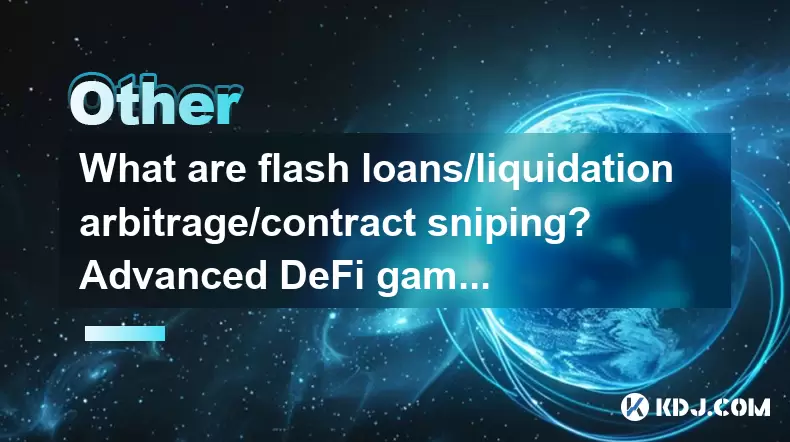
What are Flash Loans/Liquidation Arbitrage/Contract Sniping? Advanced DeFi Gameplay Analysis
In the world of decentralized finance (DeFi), advanced strategies like flash loans, liquidation arbitrage, and contract sniping have emerged as sophisticated methods for users to potentially maximize their profits. These techniques leverage the unique features of blockchain technology, such as atomic transactions and smart contracts, to execute complex financial maneuvers. In this article, we will delve into each of these strategies, explaining how they work, their potential risks, and the steps involved in executing them.
Flash Loans: Understanding and Execution
Flash loans are uncollateralized loans that must be repaid within the same transaction block. They are primarily used in DeFi to take advantage of arbitrage opportunities, liquidations, and other complex financial strategies. The key advantage of flash loans is that they allow users to borrow large sums of money without any upfront collateral, provided the loan is repaid within the same transaction.
To execute a flash loan, follow these steps:
- Identify an Opportunity: Look for arbitrage opportunities, such as price differences between decentralized exchanges (DEXs) or potential liquidations on lending platforms.
- Initiate the Loan: Use a smart contract to borrow the required amount from a flash loan provider like Aave or dYdX.
- Execute the Strategy: Perform the arbitrage or other financial maneuver using the borrowed funds.
- Repay the Loan: Ensure the loan is repaid within the same transaction block. If the loan is not repaid, the entire transaction is reverted, and no funds are lost.
Flash loans are powerful tools but come with significant risks. If the strategy fails to generate enough profit to repay the loan, the transaction will fail, and the user will not lose any funds but will also not gain any profit.
Liquidation Arbitrage: Maximizing Profits from Collateralized Positions
Liquidation arbitrage involves taking advantage of positions on lending platforms that are at risk of being liquidated. When a user's collateral value falls below a certain threshold, the position can be liquidated, and the collateral can be sold at a discount to cover the loan. Savvy traders can use this mechanism to buy the collateral at a discount and potentially profit from the difference between the discounted price and the market price.
To engage in liquidation arbitrage, follow these steps:
- Monitor Lending Platforms: Keep an eye on platforms like Compound or MakerDAO to identify positions that are nearing liquidation.
- Prepare Funds: Ensure you have enough funds to purchase the collateral at the discounted price.
- Execute the Liquidation: When a position is liquidated, quickly purchase the collateral at the discounted price.
- Sell the Collateral: Sell the purchased collateral at the market price to realize a profit.
Liquidation arbitrage can be lucrative but requires quick action and a deep understanding of the lending platform's mechanics. Additionally, the profit margins can be slim, and there is a risk of the market moving against the trader before they can sell the collateral.
Contract Sniping: Exploiting Smart Contract Vulnerabilities
Contract sniping involves exploiting vulnerabilities in smart contracts to gain an unfair advantage or profit. This strategy can range from front-running transactions to exploiting bugs in the contract code. While contract sniping can be profitable, it is often considered unethical and can lead to significant losses for other users.
To execute contract sniping, follow these steps:
- Identify Vulnerabilities: Use tools like Etherscan or specialized smart contract auditing platforms to identify potential vulnerabilities in DeFi protocols.
- Craft the Exploit: Write a smart contract or script that can exploit the identified vulnerability.
- Execute the Snipe: Deploy the exploit to gain an advantage or profit from the vulnerability.
- Withdraw Profits: Quickly withdraw any profits before the vulnerability is patched.
Contract sniping is a high-risk strategy that can lead to legal repercussions and damage to the DeFi ecosystem. It is essential to approach this strategy with caution and consider the ethical implications.
Risks and Considerations in Advanced DeFi Strategies
Engaging in advanced DeFi strategies like flash loans, liquidation arbitrage, and contract sniping comes with significant risks. Smart contract risk is a primary concern, as any flaw in the contract code can lead to significant losses. Additionally, market volatility can quickly turn a profitable strategy into a loss. It's crucial to thoroughly understand the mechanics of each strategy and the underlying protocols before attempting to execute them.
Furthermore, gas fees can be a substantial cost, especially for complex transactions involving flash loans or contract sniping. Users must factor in these costs when calculating potential profits. Lastly, regulatory risk is an evolving concern, as governments and regulatory bodies may impose restrictions on certain DeFi activities.
Tools and Resources for Advanced DeFi Gameplay
To successfully engage in advanced DeFi strategies, users need access to a variety of tools and resources. Blockchain explorers like Etherscan and BscScan are essential for monitoring transactions and smart contract interactions. Decentralized exchange aggregators like 1inch and Matcha can help identify arbitrage opportunities across multiple DEXs.
Additionally, smart contract auditing platforms like CertiK and Quantstamp provide valuable insights into the security of DeFi protocols. Flash loan providers like Aave and dYdX offer the necessary infrastructure to execute flash loan strategies. Lastly, developer tools like Remix and Truffle are crucial for writing and deploying smart contracts for contract sniping and other advanced strategies.
Case Studies: Real-World Examples of Advanced DeFi Strategies
Examining real-world examples can provide valuable insights into the practical application of advanced DeFi strategies. One notable case involved a flash loan attack on the bZx protocol, where attackers used flash loans to manipulate the price of an asset and profit from the resulting liquidation. This incident highlighted the potential risks and rewards of flash loans and led to increased scrutiny of DeFi protocols.
Another example is the liquidation arbitrage on Compound, where traders took advantage of positions nearing liquidation to buy collateral at a discount and sell it at a profit. These cases demonstrate the importance of understanding the mechanics of each strategy and the potential for significant gains and losses.
Frequently Asked Questions
Q: Are flash loans available on all DeFi platforms?
A: No, flash loans are only available on platforms that support them, such as Aave and dYdX. Users must check the specific platform's documentation to see if flash loans are supported.
Q: Can liquidation arbitrage be automated?
A: Yes, liquidation arbitrage can be automated using smart contracts and bots that monitor lending platforms and execute trades when liquidation opportunities arise. However, automation increases the complexity and potential risks of the strategy.
Q: Is contract sniping illegal?
A: Contract sniping can be considered illegal or unethical depending on the jurisdiction and the specific nature of the exploit. It is important to consult legal advice before engaging in contract sniping activities.
Q: How can I protect myself from being a victim of contract sniping?
A: To protect yourself from contract sniping, use audited smart contracts, monitor your transactions closely, and avoid interacting with unknown or untrusted DeFi protocols. Additionally, staying informed about common vulnerabilities and best practices can help mitigate the risk.
Disclaimer:info@kdj.com
The information provided is not trading advice. kdj.com does not assume any responsibility for any investments made based on the information provided in this article. Cryptocurrencies are highly volatile and it is highly recommended that you invest with caution after thorough research!
If you believe that the content used on this website infringes your copyright, please contact us immediately (info@kdj.com) and we will delete it promptly.
- Three meme tokens—Test Token (TST), Vine (VINE), and Broccoli 714 (BROCCOLI)—have emerged as high-volatility plays this week on BNB Chain
- 2025-06-08 06:35:12
- Ripple (XRP) Has Announced Plans to “Sunset” Its Quarterly Reports
- 2025-06-08 06:35:12
- 4 Standout Cryptos to Buy Now and Target 2025 as a Pivotal Year
- 2025-06-08 06:30:16
- BlockDAG Captures Attention by Shifting the Spotlight Away from Quick Market Swings and Toward Longer-Term Strategies.
- 2025-06-08 06:30:16
- BlockDAG (BDAG) Presale Hits $226.5M as Price Analysis Hints at Short-Term Filecoin Bounce
- 2025-06-08 06:25:15
- Tron (TRX) Appears Set to Overtake Dogecoin (DOGE) as the Eighth-Largest Cryptocurrency
- 2025-06-08 06:25:14
Related knowledge
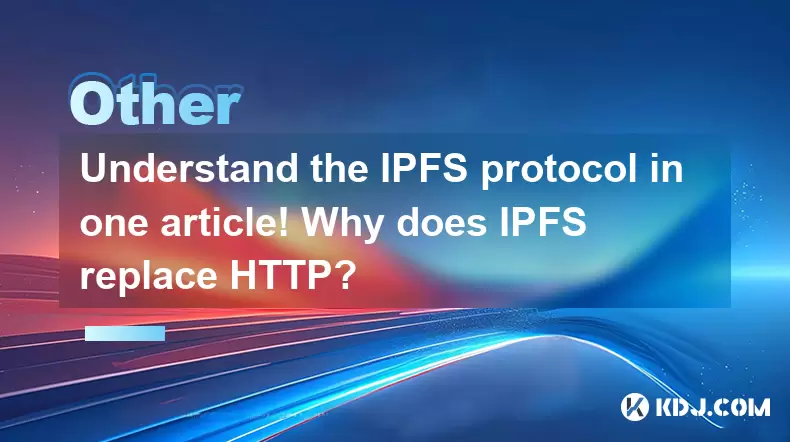
Understand the IPFS protocol in one article! Why does IPFS replace HTTP?
Jun 01,2025 at 06:01pm
The InterPlanetary File System, commonly known as IPFS, is a protocol and network designed to create a more efficient, decentralized, and secure method for storing and sharing files. As the digital world evolves, the traditional HTTP (Hypertext Transfer Protocol) has shown limitations that IPFS aims to address. This article will delve into the intricaci...
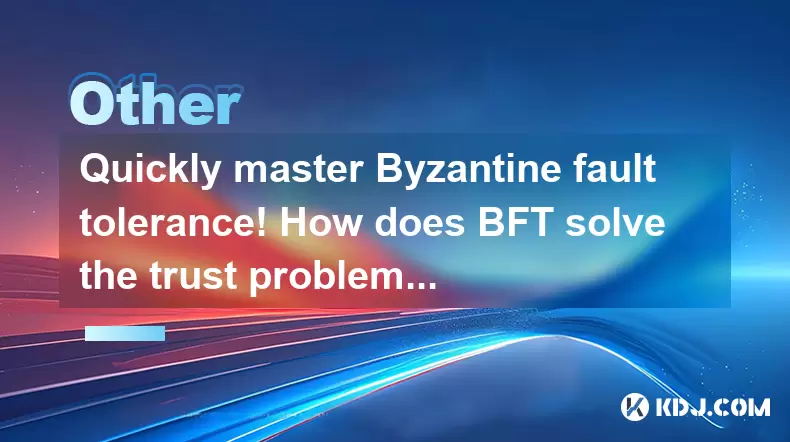
Quickly master Byzantine fault tolerance! How does BFT solve the trust problem?
May 29,2025 at 02:43am
Introduction to Byzantine Fault ToleranceByzantine Fault Tolerance (BFT) is a crucial concept in the field of distributed computing, particularly within the cryptocurrency ecosystem. BFT addresses the challenge of achieving consensus in a network where some nodes might behave maliciously or fail unexpectedly. This article will delve into the mechanisms ...
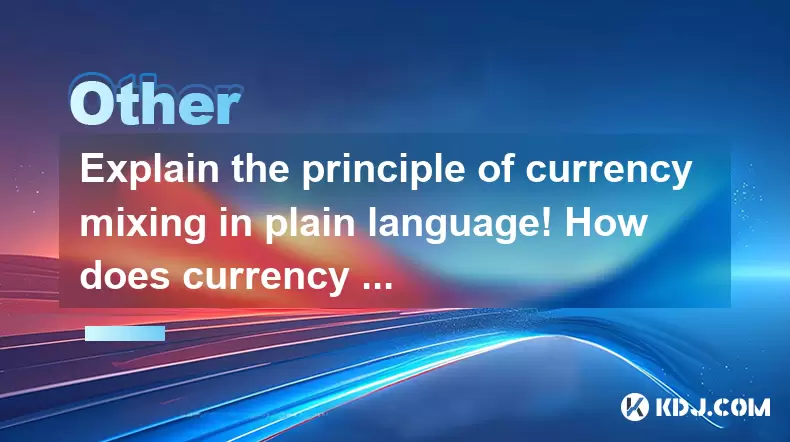
Explain the principle of currency mixing in plain language! How does currency mixing protect privacy?
May 30,2025 at 07:35am
Currency mixing, often referred to as coin mixing or tumbling, is a process used in the cryptocurrency world to enhance privacy and anonymity. The principle behind currency mixing is simple yet effective: it breaks the direct link between the sender and the receiver of cryptocurrencies by mixing multiple transactions together. This makes it difficult fo...
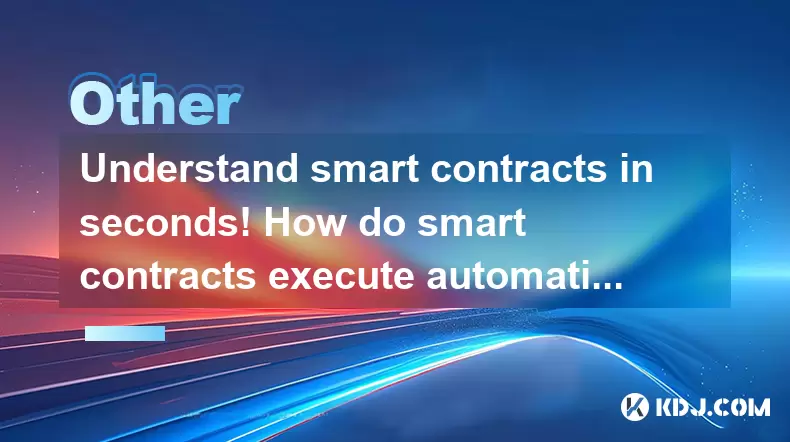
Understand smart contracts in seconds! How do smart contracts execute automatically?
May 30,2025 at 02:43am
Smart contracts have revolutionized the way transactions are executed in the cryptocurrency world. They are self-executing contracts with the terms of the agreement directly written into code. This article will delve into the intricacies of smart contracts and explain how they execute automatically, providing a comprehensive understanding of this ground...

Easily understand the sidechain technology! How does the sidechain expand the blockchain?
Jun 05,2025 at 02:21pm
Sidechain technology has emerged as a significant innovation in the blockchain ecosystem, offering a solution to some of the scalability and interoperability challenges faced by main blockchain networks. In this article, we will delve into the concept of sidechains, exploring how they work and how they enhance the functionality and capacity of existing ...

A graphic explanation of the Merkle tree! What are the uses of the Merkle tree?
May 31,2025 at 02:29am
Introduction to the Merkle TreeA Merkle tree, also known as a hash tree, is a fundamental data structure in the world of cryptocurrencies, especially within blockchain technology. It is used to efficiently and securely verify the integrity of large data sets. The concept was first introduced by Ralph Merkle in 1979, and it has since become a cornerstone...

Understand the IPFS protocol in one article! Why does IPFS replace HTTP?
Jun 01,2025 at 06:01pm
The InterPlanetary File System, commonly known as IPFS, is a protocol and network designed to create a more efficient, decentralized, and secure method for storing and sharing files. As the digital world evolves, the traditional HTTP (Hypertext Transfer Protocol) has shown limitations that IPFS aims to address. This article will delve into the intricaci...

Quickly master Byzantine fault tolerance! How does BFT solve the trust problem?
May 29,2025 at 02:43am
Introduction to Byzantine Fault ToleranceByzantine Fault Tolerance (BFT) is a crucial concept in the field of distributed computing, particularly within the cryptocurrency ecosystem. BFT addresses the challenge of achieving consensus in a network where some nodes might behave maliciously or fail unexpectedly. This article will delve into the mechanisms ...

Explain the principle of currency mixing in plain language! How does currency mixing protect privacy?
May 30,2025 at 07:35am
Currency mixing, often referred to as coin mixing or tumbling, is a process used in the cryptocurrency world to enhance privacy and anonymity. The principle behind currency mixing is simple yet effective: it breaks the direct link between the sender and the receiver of cryptocurrencies by mixing multiple transactions together. This makes it difficult fo...

Understand smart contracts in seconds! How do smart contracts execute automatically?
May 30,2025 at 02:43am
Smart contracts have revolutionized the way transactions are executed in the cryptocurrency world. They are self-executing contracts with the terms of the agreement directly written into code. This article will delve into the intricacies of smart contracts and explain how they execute automatically, providing a comprehensive understanding of this ground...

Easily understand the sidechain technology! How does the sidechain expand the blockchain?
Jun 05,2025 at 02:21pm
Sidechain technology has emerged as a significant innovation in the blockchain ecosystem, offering a solution to some of the scalability and interoperability challenges faced by main blockchain networks. In this article, we will delve into the concept of sidechains, exploring how they work and how they enhance the functionality and capacity of existing ...

A graphic explanation of the Merkle tree! What are the uses of the Merkle tree?
May 31,2025 at 02:29am
Introduction to the Merkle TreeA Merkle tree, also known as a hash tree, is a fundamental data structure in the world of cryptocurrencies, especially within blockchain technology. It is used to efficiently and securely verify the integrity of large data sets. The concept was first introduced by Ralph Merkle in 1979, and it has since become a cornerstone...
See all articles

























































































